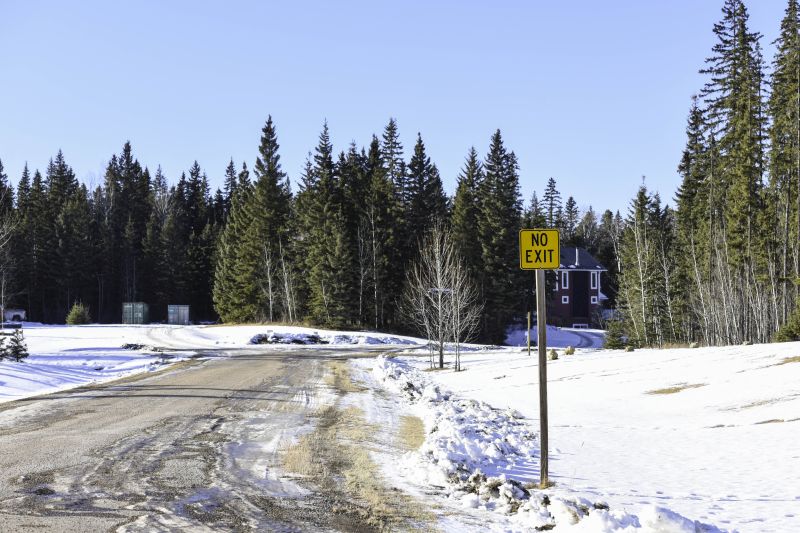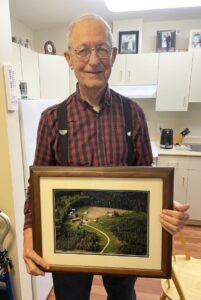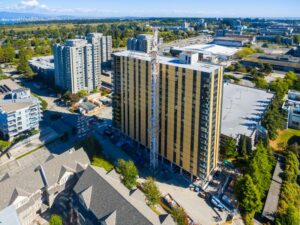During the last regular meeting of January for Woodlands County Council, the group briefly
discussed the topic of cold mix roads and the use of a special tax that would enable a project
that benefits a small population of the County to be partially or fully funded by those who directly
benefit from the work.
At a previous meeting, the Council asked for options for using a Local Improvement Tax for their
Cold Mix Program, which would share the cost of Cold Mix upgrades/maintenance with the
residents in the direct vicinity. Rather than have the entire population of Woodlands County pay
increased taxes towards the cold mix for a road that services twelve homes, a Local
Improvement Tax would focus cost on those who live in the subdivision, who most benefit from
having the road fixed.
Some municipalities use this type of taxation to fund dust treatments, sidewalk improvements,
drainage work, lane lighting, certain recreational services, various paving projects, or
water/sewer upgrades and maintenance work that only benefits a small part of their population.
Residents can even petition a municipality for an improvement tax to fund a project they feel is
needed in their area.
That’s precisely what happened in Calgary when at least 2/3 of the residents from a dozen
neighbourhoods petitioned the city for boulevard maintenance and enhanced landscaping
maintenance work, above and beyond what the city had already done. Using a Local
Improvement Tax, the residents in the twelve neighbourhoods got what they wanted, and much
of the cost came directly from them, not the rest of Calgary’s population who didn’t personally
benefit from it happening.
“The criteria for the tax can be based on four different items: assessment, each parcel of land,
frontage and unit of area,” explained Andre Bachand, the County’s Infrastructure Services
Director. The process from start to finish for implementing a Local Improvement Tax is between
two and two and a half months, starting with creating a Local Improvement Plan, which identifies
the groundwork.
Once the plan is created, notice will be mailed to landowners, and a 30-day timeline will begin
allowing the public to petition. Then, the Council would give the first reading to the bylaw,
followed by a two-week advertisement period, before they vote it into action. After that, if the
County highlighted an area for a Local Improvement Tax, they would need to let locally impacted
residents know, give 30 days for residents to petition, and if nothing arose, they would have up
to three years to impose the tax on those specific residents.
To show how a Local Improvement Tax would look financially, the Council was provided with an
example subdivision featuring a 680m roadway that served twelve properties. The road ended
in the subdivision and had one entry point to the main road. The cost of using cold mix on the
roadway was $90,000. That cost was then divided between the twelve properties based on each
of the four criteria Bachand outlined above and at different contribution levels.
Depending on which criterium is used, the cost changes. Using the average property
assessment from the provided list, which was $433,510, a resident would expect to pay about
$1,100 yearly for seven years if the County wanted to recoup 100 percent of the project’s costs.
If the County only wanted to recoup, say, 25 percent, the price would drop to $277.98/year.
If the County decided to use frontage as the criteria to determine cost division, a resident with
125m of frontage could expect to pay $295.43 for seven years (25 percent). At 100 percent cost
recovery, the same landowner would pay just over $1,200 annually. The County could also
choose to split the cost down the middle and have each landowner pay the same amount
regardless of assessment or land size. At 100 percent cost recovery, each landowner would pay
$1,071.43 per year for seven years. At 25 percent cost recovery, the cost would be just under
$270.
With several different ways to implement a Local Improvement Tax, four variables from which to
decide how much residents pay and multiple percentage choices, Woodlands County Council is
looking to have conversations with residents so there is a better understanding of the process
and how residents can use this form of tax to their benefit in their subdivisions.
Woodlands County will be piggybacking on its Budget Open House events planned at the end of
this month, using them as an opportunity to speak about the topic of local tax improvement.
Those with questions or concerns are encouraged to attend either the Woodlands County office
in Whitecourt on February 26 from 4:00 pm to 7:00 pm or the Legion Hall in Fort Assiniboine on
February 27 from 4:00 pm to 7:00 pm. Both events will feature a brief budget presentation at
6:00 pm.








More Stories
Reminiscing with Residents: Spruceview edition with Jurgen Moll
A great ending to the regular season, with the post-season coming up next
The Wolverines are on fire as the countdown to the playoffs is on